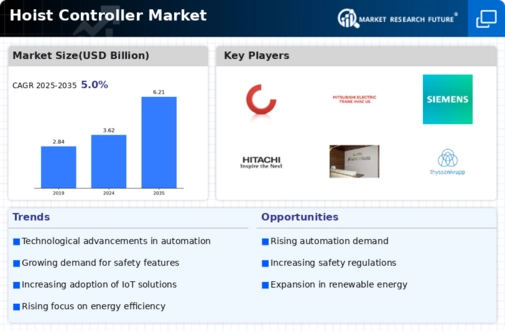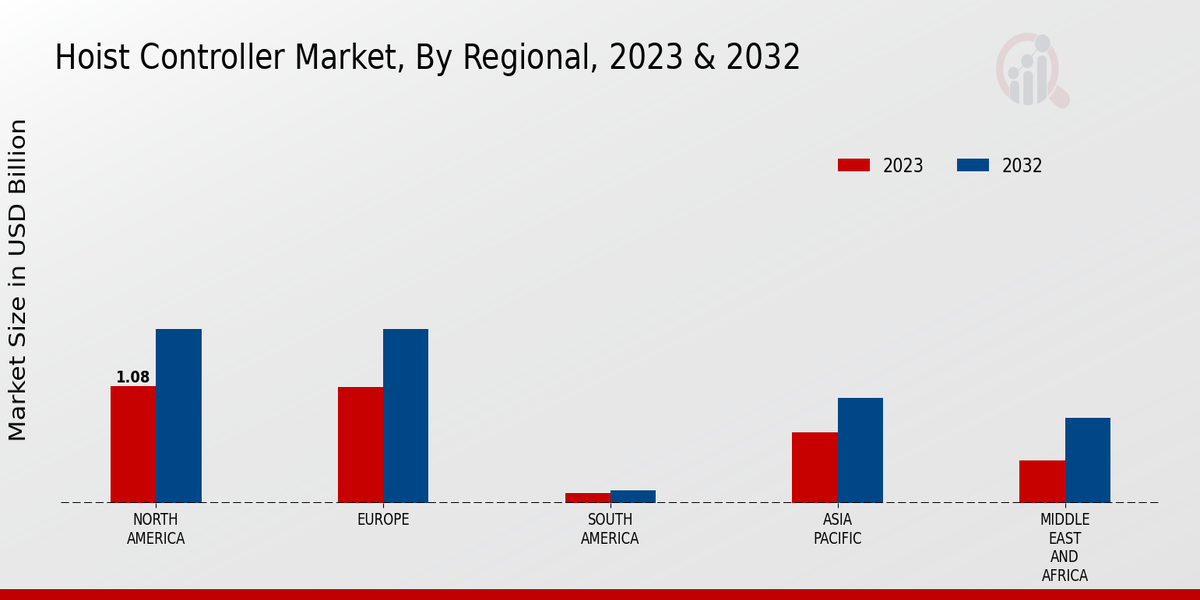Market Growth Projections
The Global Hoist Controller Market Industry is projected to witness substantial growth over the next decade. The market is expected to reach approximately 3.62 USD Billion in 2024 and is anticipated to grow to around 6.21 USD Billion by 2035. This growth reflects a compound annual growth rate of 5.02% from 2025 to 2035. The increasing demand for automation, technological advancements, stringent safety regulations, and the growth of construction projects are key factors driving this expansion. As industries continue to evolve, the Global Hoist Controller Market Industry is poised for significant advancements and innovations.
Technological Advancements
Technological advancements in hoist controller systems are significantly influencing the Global Hoist Controller Market Industry. Innovations such as IoT integration, remote monitoring, and enhanced safety features are becoming increasingly prevalent. These advancements allow for real-time data analysis and improved operational efficiency. For instance, the incorporation of smart sensors can provide predictive maintenance alerts, reducing downtime and operational costs. As these technologies evolve, they are expected to attract investments, further driving market growth. The anticipated market expansion to 6.21 USD Billion by 2035 underscores the importance of continuous innovation in maintaining competitive advantage within the Global Hoist Controller Market Industry.
Rising Demand for Automation
The increasing demand for automation across various industries is a primary driver for the Global Hoist Controller Market Industry. Industries such as construction, manufacturing, and logistics are increasingly adopting automated systems to enhance efficiency and reduce labor costs. This trend is expected to propel the market value to approximately 3.62 USD Billion in 2024. As companies seek to optimize operations, the integration of advanced hoist controllers becomes essential. Automation not only streamlines processes but also improves safety standards, which is crucial in sectors where heavy lifting is common. Thus, the push for automation is likely to sustain growth in the Global Hoist Controller Market Industry.
Stringent Safety Regulations
Stringent safety regulations imposed by governments worldwide are a crucial driver for the Global Hoist Controller Market Industry. Regulatory bodies are increasingly mandating the use of advanced hoist controllers to ensure compliance with safety standards. These regulations aim to minimize workplace accidents and enhance operational safety in industries that involve heavy lifting. As a result, manufacturers are compelled to invest in high-quality hoist controllers that meet these regulatory requirements. This trend not only fosters market growth but also encourages the development of more sophisticated safety features in hoist controllers, thereby enhancing their appeal in the Global Hoist Controller Market Industry.
Increased Focus on Energy Efficiency
The increased focus on energy efficiency in industrial operations is driving the Global Hoist Controller Market Industry. Companies are increasingly seeking solutions that not only enhance performance but also reduce energy consumption. Hoist controllers equipped with energy-efficient technologies can significantly lower operational costs and minimize environmental impact. This trend is particularly relevant as industries face pressure to adopt sustainable practices. The integration of energy-efficient hoist controllers aligns with global sustainability goals, making them more attractive to businesses. As a result, this focus on energy efficiency is likely to contribute to the growth trajectory of the Global Hoist Controller Market Industry.
Growth in Construction and Infrastructure Projects
The growth in construction and infrastructure projects globally is a significant driver for the Global Hoist Controller Market Industry. With urbanization and population growth, there is an increasing need for residential and commercial buildings, as well as infrastructure development. This surge in construction activities necessitates the use of hoist controllers for efficient material handling and transportation. As a result, the market is projected to experience a compound annual growth rate of 5.02% from 2025 to 2035. The ongoing investments in infrastructure development across various regions further solidify the demand for advanced hoist controllers, thereby contributing to the overall growth of the Global Hoist Controller Market Industry.


















Leave a Comment